The Dark Souls series includes some of my favorite games of all time, along with Bloodborne, so when a new “Souls-like” game receives heaps of praise and attention, it’s merely a matter of time until I play it. Although I will inevitably point out some of the various similarities and differences between the two, this review is not going to be a giant comparison between Soulsborne and Nioh by developer Team Ninja. That’s because this game does not deserve to simply live in the shadow of From Software’s achievements. No, Nioh deserves to be remembered purely for what it is: an excellent action-RPG with challenging gameplay that both demands and encourages players to constantly improve.
The game is inspired by real life historical figures and takes place in the Sengoku (or “warring states”) period of Japan, late 1500’s/early 1600’s. The player controls William Adams: in reality, one of the first westerners to be officially deemed a samurai; in the game, a discount Geralt of Rivia who slays Japanese demons (“yokai”) instead of cockatrices and basilisks. The plot begins when William’s newfound nemesis, the alchemist Edward Kelley, steals his guardian spirit and escapes to Japan in search of large quantities of a magical mineral called “amrita.” William is not far behind and soon lands on Japanese shores himself, quickly finding allies in Hattori Hanzo the ninja as well as a few generals; and finding enemies in the hundreds of yokai that swarm the land as well as rival Japanese military leaders.
Right from the beginning, it is clear that Nioh mostly ditches the “figure everything out for yourself” mentality of the Soulsbourne games in favor of a more player-friendly experience. The story is told through various texts, cutscenes, and dialogue instead of being cryptically hidden in item descriptions, and characters provide plenty of exposition instead of telling you small bits and pieces of their backstories while creepily chuckling. The only kind of confusion I experienced with the story stemmed from my inability to keep track of all the Japanese names, which led me to practicing my memorization of them from the character directory. On the bright side, there are many intriguing characters. The game fleshes out their backgrounds with biographies and beautifully animated “guardian spirit-sharing” cutscenes. I suppose my biggest complaint about having all these characters is that few of them ever get the time to really shine. By the time you begin to fully appreciate a certain person’s story, a new one appears.
However, the main focus of the plot is William’s quest for revenge and his assistance to the noble yet morally troubled leader, Tokugawa Ieyasu. As far as William goes, he’s about as by-the-numbers as they come with action games protagonists, though not ridiculous or over the top in any way, which I can appreciate. It seems as though the writers wanted him to act more like the eyes of western audiences rather than a memorable character, which would normally be fine, but he definitely could have benefited from a more interesting personality and more dialogue. The English-speaking characters’ voice acting is decent enough (although sometimes a bit cheesy) and it’s cool that Team Ninja didn’t have every Japanese character inexplicably speak English – a certain spirit which William encounters gives him the ability to understand Japanese, so it doesn’t break the immersion of the setting too much. The story itself is not exactly anything special, but I still found it very enjoyable and the ending was satisfactory. The last mission was truly a spectacle – the game holds nothing back in its final moments. I was expecting pure sequel bait, but thankfully the final act of the story is nicely tied up with just a couple reminders that Team Ninja is open to the possibility of a sequel. (Also, let’s be glad that there are proper ending cutscenes as opposed to From Software’s head-scratchers that practically require lore research on a fan wiki.)
It’s beyond obvious that the real bread and butter of Nioh is its gameplay. The combat is fast-paced, unrelentingly fun, and challenging. William can perform quick attacks, strong attacks, blocks, grapples, and many unlockable skills unique to each weapon type, of which there are five: swords, dual swords, axes, spears, and kusarigamas (“chain sickles”). Each type is dictated by different stats that William can level up by collecting souls amrita from enemies. William’s “ki” (normally called stamina in other games) can also be “pulsed” in order to gain a portion of it back after attacking, provided the player presses a certain button at just the right time. This is one of the many simple yet effective ways the game is able to shape its own identity and stand out from the crowd.
Despite the levelling system, William’s personal stats are not nearly as important as the gear itself. The game constantly showers the player in loot, whether it be weapons, armor, or consumable items. Picking up a new drop is almost always satisfying; there will be better armor and weapons in nearly every subsequent mission. Speaking of armor, the sets found in the game’s mid-late sections are absolutely beautiful. The game also offers extra items and abilities in “ninjutsu,” which stocks William with things like shurikens, bombs, and poisons; and “onmyo magic,” which provides elemental buffs, magic projectiles, and much more. Coming fresh out of Soulsbourne, I had originally thought that ninjutsu and onmyo could be completely ignored with the advantage of having more time and levels invested into my weapons, but this was a major rookie mistake. In Nioh, players are far better off with trying to be a “jack of all trades and master of none,” investing equally into their samurai, ninja, and magic skills. Most enemies and bosses can be made far easier with a few debuffs cast on them. The soft caps for weapon-related stats are also rather low, so the difference it makes to continue levelling strength after 16 or 17, for example, is barely even noticeable.
Missions usually include both human and nonhuman enemies, but most of the ones that William will face are the different types of yokai. Yokai in the game are inspired by old Japanese folklore, which makes them even more interesting to western audiences who are burnt out of typical creatures like zombies in this day and age. Each type of yokai requires players to alter their strategies appropriately. Axe-wielding fiends have subtle differences in their movesets from those that wield swords. Attempting to run up and slaughter a wheelmonk without backing down is a great way to get burned or rolled to death. And don’t even get me started on the raven tengu…may the gods have mercy on whoever decided to put so many of those in the game. Thankfully, whenever players get stuck, they will most likely have their guardian spirit ready to be used as a “living weapon,” with which William is invincible and his attack power buffed for a limited time. Guardian spirits can be swapped at any shrine (checkpoint) and each one has its own element and boosts for William. It actually doesn’t take too much amrita to charge the living weapon, which I appreciated during the several times I felt stuck on a challenge or boss.
On the whole, the boss fights of Nioh are alright. Only a few stood out to me as being great, but there aren’t any that I would call bad. My biggest complaint about them is that the same four or five theme tunes are recycled for every boss. Luckily, they’re pretty decent tracks. (The game’s music is good overall.) And the boss fights themselves are mostly both challenging and fun, despite each one requiring essentially the same kind of “watch for the heavy attacks, dodge, and punish” strategy.
Along with the main missions, there are also sub missions and twilight missions. Sub missions usually take place on the same map as previously completed missions with different goals and loot, although there are many that feature new maps. Twilight missions are harder versions of missions you have already completed, featuring more, stronger yokai and significantly better loot. With these additions to the game, Team Ninja succeeds in changing the fundamental ways that players must tackle challenges even though the maps themselves are the same.
On to a few miscellaneous notes: there is a certain option with which the game allows players to choose either a higher graphical quality or a higher frame rate, which is more than welcome to see in a console game. (The higher frame rate is the correct answer, by the way – it makes a world of difference.) William’s actions feel much smoother and more responsive than the deliberately clunkier Soulsbourne gameplay, allowing for both dashes and rolls out of harm’s way, though only the latter provides invincibility frames. Also, the art style of the game fits the atmosphere of historic Japan nicely, although I must say the game’s environments can sometimes seem muddy and ugly, particularly in the penultimate main mission. But this is a very minor flaw that can be easily ignored. After the end of the main story, there are a few epilogue levels as well as the ability to start the “Way of the Strong,” which is basically “new game +,” allowing players to try their hand at a harder version of the entire game while keeping their current loot and gaining better loot. The best part is that players are free to switch between the normal game and the Way of the Strong at any time outside of missions.
Nioh offers an incredible amount of content for a linear, open level game, and I never even touched multiplayer (I lack PS+). Based on what I’ve read, the multiplayer seems fine and assembled much more coherently than that of Soulsbourne. The fact that this game was stuck in development hell for over a decade makes the final product’s mere existence that much more impressive. I could go on and on about the details of Nioh, how they all come together in a wonderful gaming experience, and how it’s a definite game of the year contender for me, but I’ve said more than enough. It’s better if you just find out for yourself.
Final rating: 9/10.
Here is the official Nioh Trailer:
PS4 Review
-
Overall Score - 9/109/10
After being addicted to all things Call of Duty for several years, I decided to broaden my gaming horizons, and I am extremely glad I did. There are so many quality games out there, and I want to experience as many as possible. I watch YouTube way more than TV. Not much of a sports guy, but archery is life. If I could choose anyone to review me as a person, I wouldn't pick any reviewers from IGN since my body is about 60% water.

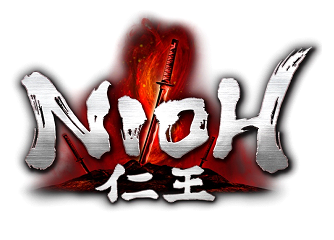
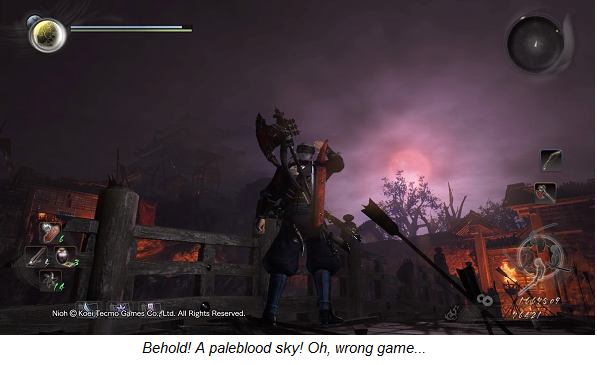
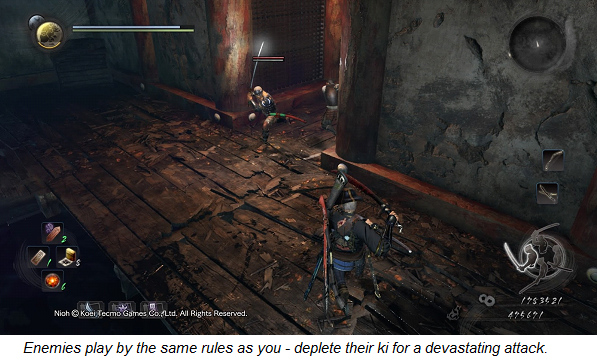
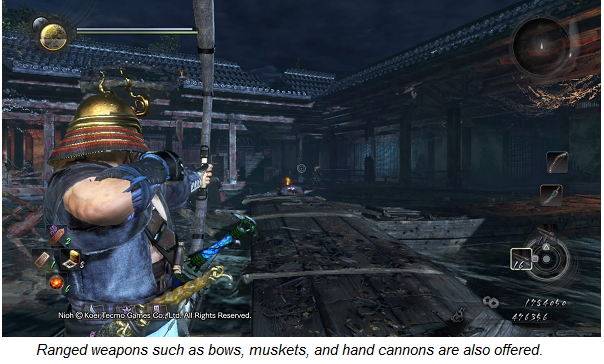
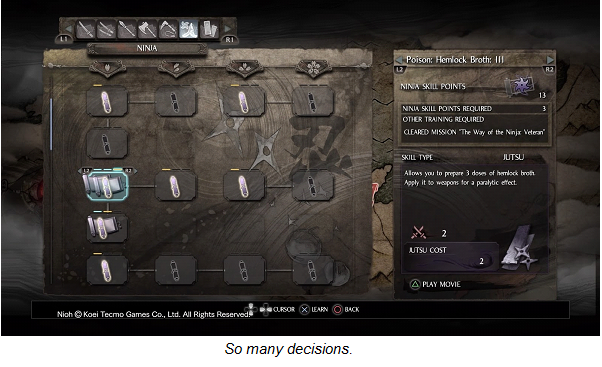
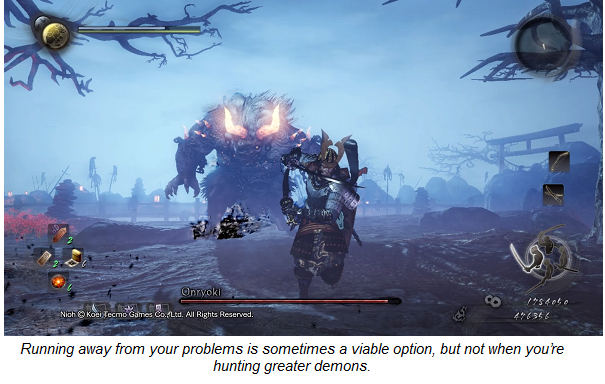
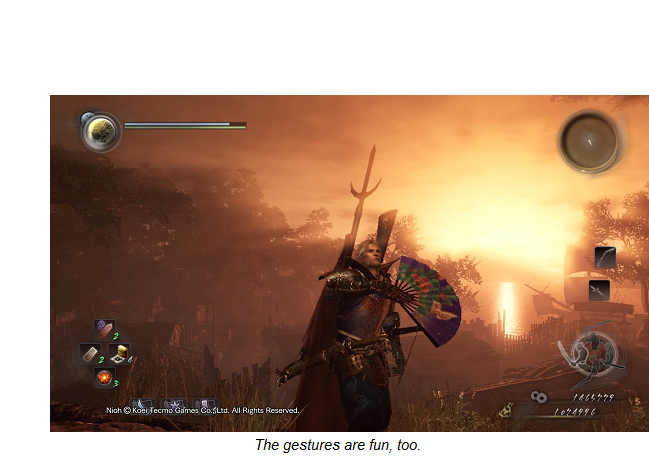




More Stories
DAIMON BLADES Preview for Steam Early Access
ReStory Preview for Steam
Firefighting Simulator: Ignite Releases Parker’s Story DLC for PC and Console